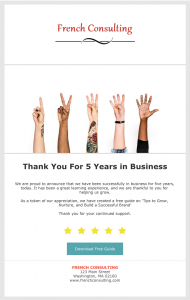Plus, the hazards of credit card targeting
Marketing Land’s daily brief features daily insights, news, tips, and essential bits of wisdom for today’s digital marketer. If you would like to read this before the rest of the internet does, sign up here to get it delivered to your inbox daily.
Good morning, Marketers, what does Twitter have to do to be liked?
Sure, people dump on Facebook all the time, and for lots of good reasons. But Facebook continues to thrive, and although it does face challenges going up against Apple on user privacy, it has easily shaken off criticism, regulatory assaults and advertising boycotts.
Twitter, however, always seems to give the impression that it’s clinging on. Yes, its ad revenue is growing, but there’s no reason to think it will ever take off like a rocket, partly because user growth has come close to plateauing over the last few years. Yes, it grows a little each quarter, but one has the sense that around 300 million monthly active users is the audience it’s going to have, indefinitely. And investors seem to share that view.
Twitter is part of most marketing strategies, but one has the sense that it’s not the critical part. How much would brands miss it?
Kim Davis
Editorial Director
Facebook revenue almost doubled: Twitter hit its target, but stock fell
In Q1 earnings reports last week, Facebook nearly doubled its revenue YoY. Twitter’s revenue was up 28%, but it missed its forecast for monthly users and issued a forecast for Q2 revenue which fell short of the market’s expectations. Twitter stock fell after the earnings were released and closed down about 17% Friday.
Facebook’s increase was driven largely by an uptick in ad prices, according to the CFO outlook commentary on the earnings report: “We are pleased with the strength of our advertising revenue growth in the first quarter of 2021, which was driven by a 30% year-over-year increase in the average price per ad and a 12% increase in the number of ads delivered.”
Why we care. That was a feel-good earnings report for Facebook, but until we know the impact Apple’s App Tracking Transparency initiative is going to have on the value of inventory, it’s hard to extrapolate much from these Q1 results.
Twitter meanwhile continues to be a very high profile social media channel, and the increase in ad revenue must be welcome, but it still seems to be finding its way as a business. Perhaps it’s looking for its Instagram (Vine wasn’t it).
Credit card ads were targeted by age, violating Facebook’s anti-discrimination policy
Financial product companies were able to exclude users under certain ages from their target audiences, according to a new report from The Markup. “The Markup found examples of four different companies targeting ads for financial services to restricted age groups, a practice that violates Facebook’s anti-discrimination policies and, in some cases, may violate federal or state civil rights laws,” wrote Corin Faife and Alfred Ng.
Aspiration’s Zero credit card was able to exclude users under 25. Another service called Hometap, which offers cash in exchange for shares in home equity, was able to exclude any Facebook users under 35 from their campaigns. It’s not obvious how the ads were able to bypass filters Facebook has in place for anti-discrimination.
This isn’t the first time that an ads product has let discrimination slip through the cracks. In February, employers, landlords and credit providers could prevent their Google Ads from showing to people of “unknown gender,” enabling potential discrimination against nonbinary individuals.
Why we care. Targeting is key to ensuring your advertising reaches the right audience, but it’s also imperative that your advertising doesn’t exclude any group illegally. Most advertising tools have protocols to prevent this, but advertisers in industries like finance, housing, and employment need to be extra careful and give any targeting a second look before launch.
Can Amazon’s hold on shoppers be broken?
40% of US shoppers would like to reduce their purchasing with Amazon, and 30% feel guilty after buying from Amazon. Those results come from a survey of over 2,000 U.S. consumers, conducted by Advanis for Sitecore. Almost half of those surveyed fell into the 18-24 age range.
Age is relevant here, because the younger the respondent, the more likely they were to feel guilt. Baby Boomers were fine with buying from the online shopping giant. Of course, a guilty conscience might have many causes, from buying or spending too much to the disapproval of Amazon’s treatment of its workforce and hostility to unionization.
The survey isn’t clear on causes, but a lot might be read into the reasons people gave for considering leaving Amazon. Poor quality purchases and lack of choice (each 21%) were much more widely reported than wanting to give other online retailers a chance (12%).
Why we care. The bottom line is experience. Gen Z feels most guilty about using Amazon, and over 40% of Gen Z would be happy to make a switch if other online retailers provided a comparable experience, including discounts and incentives. Young consumers are giving competitors to Amazon a clear roadmap to win their business.
Quote of the day
“I am heartbroken by the current situation in India. I’m grateful the US government is mobilizing to help. Microsoft will continue to use its voice, resources, and technology to aid relief efforts, and support the purchase of critical oxygen concentration devices.” Satya Nadella, CEO, Microsoft
Marketing Land – Internet Marketing News, Strategies & Tips
(50)
Report Post







